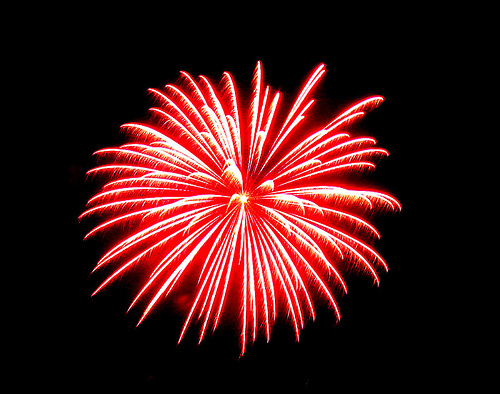 It's just not July 4th without fireworks, and fireworks are all about chemistry!
It's just not July 4th without fireworks, and fireworks are all about chemistry!I'm attending a chemistry workshop in Connecticut and have science on the brain (anyone else out there spend their Independence Day deriving the Nernst equation??), so July 4th brings to mind the science behind fireworks.
- Check out this NOVA website for a neat description of the anatomy of a firework.
- Here's a C&E News article about environmentally friendly fireworks
- While watching the show tonight, you can figure out which chemicals are in the fireworks, based on color. Here's a nifty chart correlating which compounds produce which colors:
| Color | Compound |
| Red | strontium salts, lithium salts lithium carbonate, Li2CO3 = red strontium carbonate, SrCO3 = bright red |
| Orange | calcium salts calcium chloride, CaCl2 calcium sulfate, CaSO4·xH2O, where x = 0,2,3,5 |
| Gold | incandescence of iron (with carbon), charcoal, or lampblack |
| Yellow | sodium compounds sodium nitrate, NaNO3 cryolite, Na3AlF6 |
| Electric White | white-hot metal, such as magnesium or aluminum barium oxide, BaO |
| Green | barium compounds + chlorine producer barium chloride, BaCl+ = bright green |
| Blue | copper compounds + chlorine producer copper acetoarsenite (Paris Green), Cu3As2O3Cu(C2H3O2)2 = blue copper (I) chloride, CuCl = turquoise blue |
| Purple | mixture of strontium (red) and copper (blue) compounds |
| Silver | burning aluminum, titanium, or magnesium powder or flakes |

No comments:
Post a Comment